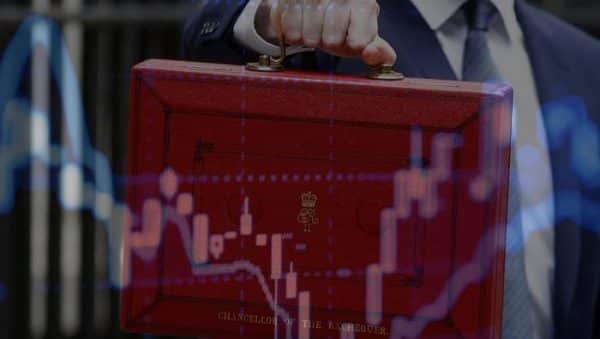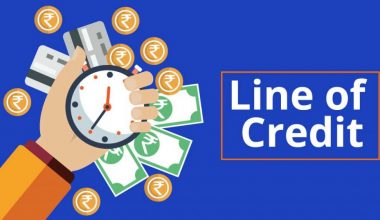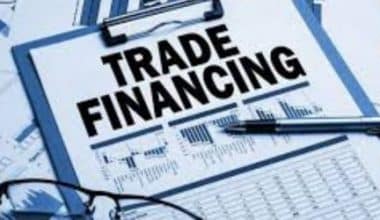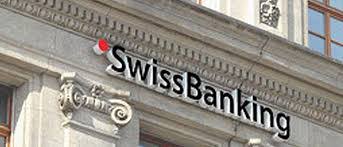A rising stock market and an increase in GDP are two common signs of economic expansion. You can’t argue with the fact that it’s a good thing. Oftentimes, overconsumption contributes to rising costs and prices in an economy that is moving too quickly. Hence, to make people less inclined to keep and spend cash, the idea is to raise the opportunity cost of having money. In other words, a tightening of monetary policy can lessen inflationary pressures in an economy that is producing more than its potential GDP. This article explains how a nation’s central bank uses contractionary monetary policy tools to control the money supply flows into the economy, its interest rates, and its effects, as well as provides examples.
Meanwhile, the efficacy of this policy may change based on the particular spending and investment patterns prevalent in every given economy. Whatever, let’s get to work…
What Is Contractionary Monetary Policy?
Contractionary monetary policy is a macroeconomic instrument that the Federal Reserve, which serves as the central bank in the United States, employs to control inflation.
It is one type of economic policy that emphasizes lowering the total amount of money in circulation, which in turn leads to decreased levels of spending and investment to slow down an economy.
When a central bank uses the instruments available to it in its monetary policy to combat inflation, this is an example of contractionary monetary policy. This is one of the ways that the central bank dampens economic growth. Hypothetically, an indication of an economy that is operating at too high a temperature is inflation, and this policy can help restrict it since it inhibits liquidity.
The bank is going to increase interest rates, which will make borrowing money more expensive. This then results in a reduction in the quantity of money and credit that banks may extend. In other words, raising interest rates and fees on loans, credit cards, and mortgages, reduces the amount of available currency.
Contractionary Monetary Policy Purposes
The prevention of inflation is the primary objective of contractionary monetary policies that are characterized as restrictive or tight. Although a moderate level of inflation is desirable, a price increase of two percent on an annual basis is considered to be economically beneficial. This, however, is because it promotes demand. Typically, people are likely to purchase more today because they believe prices will continue to rise in the future. This is why most central banks have set their inflation target to be somewhere around 2%.
It would be detrimental if inflation were to significantly rise. People buy too much today to prevent themselves from having to pay higher prices later. Also, businesses may increase output in response to increased consumer spending. This is basically so that they can meet the increasing demand. And, if they are unable to manufacture more, other price increases are certain to follow. Hence, they may decide to hire additional staff members.
People currently have higher wages, which explains why they are spending more. However, if it continues unchecked, it will eventually turn into a vicious cycle. And in situations where inflation is already in the double digits, it causes inflation to accelerate dramatically. Even worse, it may develop into hyperinflation, a condition in which prices increase by an average of 50% every month.
To prevent this from happening, the central bank employs policies that make purchases more expensive. They generally drive up the interest rates charged by banks. This results in increased costs for loans and mortgages on homes. While it brings inflation under control and restores a healthy growth rate of between 2% and 3% for the economy,
Federal Reserve- Central Banks
The Federal Reserve is considered the central bank of the United States. The core inflation rate is what is used to measure overall inflation. Generally, we calculate core inflation by excluding the impact of volatile food and oil prices from year-over-year price increases. The Consumer Price Index (CPI) is the inflation indicator that the general public is most knowledgeable about. The Personal Consumption Expenditures Price Index is the one that the Federal Reserve likes to use. It naturally performs a better job of removing the effects of volatility than the CPI does since it employs mathematics.
In the other words, the Federal Reserve will move to a more restrictive monetary policy if the PCE Index measuring core inflation climbs well above the 2% threshold.
What Factors Contribute to an Increase in Inflation?
Governments and central banks think that a modest amount of inflation is beneficial. This, however, is a result of how it helps to stimulate demand. When customers feel that there will be a hike in the price of products and services in the upcoming years, they are more likely to make purchases of such goods and services at the current moment.
However, the more that people buy, the more that companies have to make to meet the demand. This is a natural consequence of the rule of economics. This also implies that firms require a greater number of workers. And this in turn indicates a rise in employment, which in turn indicates an increment in the amount of disposable money available to spend on products and services. thus driving up economic growth.
The issue emerges whenever there’s an excessive amount of demand, and it keeps happening almost all the time. If a company is unable to produce more or if the expenses associated with production rise to an unacceptable level, it will raise prices. Hence, things will begin to cost more than their true value. However, if prices continue to rise at this rate, demand will ultimately be stifled. This is because consumers simply won’t be able to afford to continue purchasing them.
It is for this reason that a contractionary monetary policy comes into play: to forestall the occurrence of abrupt shocks. As a result, the country’s central bank, even if it’s going to be at the very least for a time, will need to raise prices for consumer goods and services. This is necessary if it wants to achieve its goal of reducing the rate of economic expansion.
Contractionary Monetary Policy Examples
The problem of rampant inflation does not arise frequently. And because of two basic factors, there aren’t too many examples of contractionary monetary policy:
- The Fed’s primary goal is to ensure that the economy expands rather than contracts.
- Inflation has not been a concern since the 1970s, which is a very important fact.
The situation of the late 1970s was perhaps the most well-known one in which there was a serious need to rein in inflation. In 1972 and 1973, the annual rate of inflation more than doubled, from 3.4 to 8.7%.
This extraordinary increase in prices can be attributed to a variety of factors, including wage control and the untying of the dollar from the gold standard. As a result, the fed funds rate was raised from 6% (in January) to 11% (in August) by the Federal Reserve to counteract the problem. This resulted in a decrease in inflation of around 5.7 percent.
Nevertheless, the OPEC energy crisis struck in August, resulting in a precipitous rise in the price of oil. In 1974, inflation rose to 12.3% while the fed funds rate hit its all-time high of 13%.
However, despite growing prices, economic growth remained modest, resulting in a perplexing period of stagflation. The Federal Reserve lowered interest rates to stimulate economic growth as the country fell into a deep recession. Despite this, the prices did not move significantly.
In the end, the Federal Reserve decided to raise interest rates by a whopping 20% in the year 1980. At the time, the inflation rate was 14%. This action finally led to the reversal of the price trend. After a while, inflation reached a low of 3.8% in the year 1982.
Contractionary Monetary Policy Effects
Effective contractionary monetary policy has numerous effects or challenges in the real world. After some time, contractionary monetary policy has effects on the economy, but the timeframe can be long or short. Monetary policy is an ongoing process that begins with a perception of economic conditions, a lengthy discussion, and then ends with a decision. the decision to either tighten or loosen monetary policy.
Financial institutions must adapt to the new monetary policy by adjusting their lending portfolios and interest rates. Also, businesses and consumers alike must adjust their borrowing habits. Especially when making major purchases like a home or automobile, interest rates fluctuate. As a result, it can take some time for these changes to take hold in the economy.
This chain of events means that contractionary monetary policy will only have minimal impact or effects shortly. Nevertheless, its full impact should be clear more than a year or two from now. However, a central bank should not avoid making decisions because of the extensive and variable time delays. Instead, the central banks should be cautious about intervening. This is simply because their actions have the potential to exacerbate economic volatility rather than alleviate it.
Monetary policy changes in a big country usually have an impact on both domestic and international macroeconomic variables. This includes nominal and real interest rates and currency exchange rates, as well as investment, output, and stock returns. In addition, the depreciation of the home currency (the US dollar) and an increase in domestic investment, consumption, and output are all effects of US contractionary monetary policy shocks that lower domestic and global interest rates.
Contractionary Monetary Policy Interest Rates (CMPIR)
The goal of a contractionary monetary policy is to reduce inflation and restrict the growth of the money supply, which can only happen by increasing interest rates.
Although this may retard economic growth and perhaps lead to an increase in unemployment, It is always important to calm the economy and maintains price stability.
When inflation was still in the double digits at the beginning of the 1980s, the Federal Reserve Board increased the benchmark interest rate to a then-record high of 20%. Hence, inflation was able to be brought back to the desired range of 3% to 4% over the next few years. This was possible even though high rates had caused a recession.
Generally, increases in the various base interest rates set by modern central banks or other mechanisms causing expansion in the money supply are what drive contractionary monetary policy. Meanwhile, there are other means to accomplish this. There will be a restriction on the quantity of active money that circulates in the economy. This is to bring inflation under control. In addition to this, it intends to put a stop to unsustainable speculation and capital investment Especially one that may have been sparked by prior economic growth.
In addition, the Federal Reserve may decide to increase the required reserves that member banks must hold to participate in open-market operations. These operations include the Fed selling assets, such as U.S. Treasuries, to large investors. Because of the high volume of sales, the current value of such assets drops, while their yields go up. As a result, investing in such assets becomes more profitable for depositors and investors.
Conclusion
In most cases, the contractionary policy will be used in the form of monetary policy to either increase interest rates or lower the total amount of capital available. Through more stringent monetary policy, it seeks to forestall the occurrence of price increases.
A price increase of 2 % on an annual basis is considered beneficial to the economy. This is basically because it leads to an increase in demand. Since people expect that costs will go up in the future, consumers will purchase a greater quantity of items in the present. This is the primary reason why the majority of central banks have set their inflation target at 2%. People will start making excessive purchases in the present to forestall having to pay greater prices in the future. This is why a significant increase in inflation is detrimental.
However, this can put pressure on businesses or large companies to increase their output to meet the increasing consumer demand. It creates a self-perpetuating cycle that ultimately results in soaring inflation and, even more disastrously, hyperinflation.
Contractionary Monetary Policy FAQs
What are the advantages of monetary policy that encourages contraction?
A contractionary monetary policy will have the direct effect of strengthening government budgets, which is a direct gain. There are different forms or examples of contractionary monetary policy. But if for instance, interest rates on Fed loans climb, the government makes more money from a financial institution that borrows money via the Fed’s discount window. The government can use this form of money to reduce budget deficits and counteract the effects of spending.
What are contractionary monetary example?
There are examples but look at 2018 as a real example of a contractionary monetary policy. According to a report from the Dhaka Tribune, the Bangladesh Bank said that it intends to adopt a contractionary monetary policy. This is to restrict the supply of credit and inflation and, as a result, to maintain economic stability in the nation.
What does Contractionary Monetary Policy as Fiscal Policy Means?
In the event of a fiscal recession, the contractionary policy, which can either involve an increase in taxes or a reduction in real government expenditures, is utilized as a fiscal policy. The objective of the contractionary fiscal policy is to bring growth down to a level. One that is consistent with a healthy financial standard.
What Does It Mean to Have a Tight Monetary Policy?
It refers to the policy of a central bank that necessitates bringing down the temperature of an overheated economy. This, however, is by increasing interest rates and decreasing the money supply. Consider evaluating contractionary monetary policy examples for more digesting
Related Articles
- Discretionary Fiscal Policy: 2023 Definitive Guide(+Detailed Examples.
- BALANCE OF PAYMENTS: Definition and Components.
- What Is BUSINESS CYCLE?- Definition, Internal and External Causes.
- Financial Performance: A Comprehensive Guide For Any Business(+ quick tools)
- WHAT IS NET WORKING CAPITAL: Definition, Formula & Examples of Working Capital






